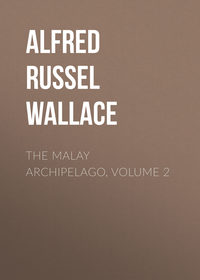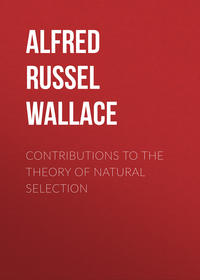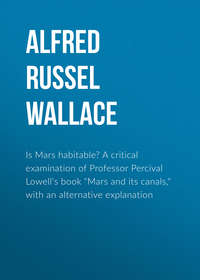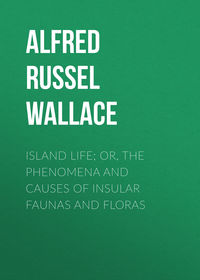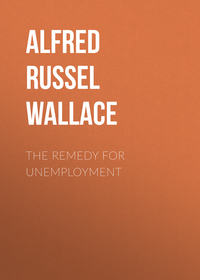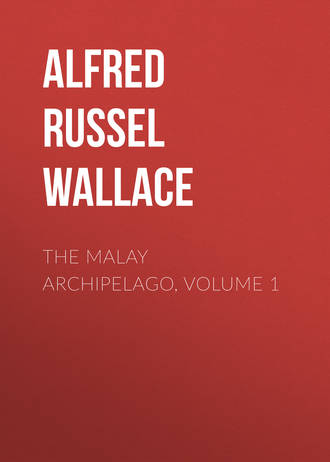 полная версия
полная версияThe Malay Archipelago, Volume 1
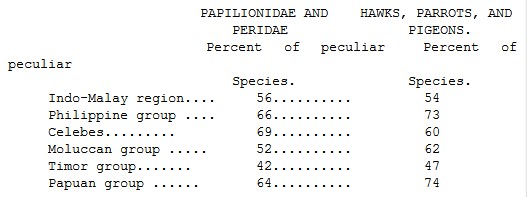
These large and well-known families well represent the general character of the zoology of Celebes; and they show that this island is really one of the most isolated portions of the Archipelago, although situated in its very centre.
But the insects of Celebes present us with other phenomena more curious and more difficult to explain than their striking individuality. The butterflies of that island are in many cases characterised by a peculiarity of outline, which distinguishes them at a glance from those of any other part of the world. It is most strongly manifested in the Papilios and the Pieridae, and consists in the forewings being either strongly curved or abruptly bent near the base, or in the extremity being elongated and often somewhat hooked. Out of the 14 species of Papilio in Celebes, 13 exhibit this peculiarity in a greater or less degree, when compared with the most nearly allied species of the surrounding islands. Ten species of Pieridae have the same character, and in four or five of the Nymphalidae it is also very distinctly marked. In almost every case, the species found in Celebes are much larger than those of the islands westward, and at least equal to those of the Moluccas, or even larger. The difference of form is, however, the most remarkable feature, as it is altogether a new thing for a whole set of species in one country to differ in exactly the same way from the corresponding sets in all the surrounding countries; and it is so well marked, that without looking at the details of colouring, most Celebes Papilios and many Pieridae, can be at once distinguished from those of other islands by their form alone.
The outside figure of each pair here given, shows the exact size and form of the fore-wing in a butterfly of Celebes, while the inner one represents the most closely allied species from one of the adjacent islands. Figure 1 shows the strongly curved margin of the Celebes species, Papilio gigon, compared with the much straighter margin of Papilio demolion from Singapore and Java. Figure 2 shows the abrupt bend over the base of the wing in Papilio miletus of Celebes, compared with the slight curvature in the common Papilio sarpedon, which has almost exactly the same form from India to New Guinea and Australia. Figure 3 shows the elongated wing of Tachyris zarinda, a native of Celebes, compared with the much shorter wing of Tachyris nero, a very closely allied species found in all the western islands. The difference of form is in each case sufficiently obvious, but when the insects themselves are compared, it is much more striking than in these partial outlines.
From the analogy of birds, we should suppose that the pointed wing gave increased rapidity of flight, since it is a character of terns, swallows, falcons, and of the swift-flying pigeons. A short and rounded wing, on the other hand, always accompanies a more feeble or more laborious flight, and one much less under command. We might suppose, therefore, that the butterflies which possess this peculiar form were better able to escape pursuit. But there seems no unusual abundance of insectivorous birds to render this necessary; and as we cannot believe that such a curious peculiarity is without meaning, it seems probable that it is the result of a former condition of things, when the island possessed a much richer fauna, the relics of which we see in the isolated birds and Mammalia now inhabiting it; and when the abundance of insectivorous creatures rendered some unusual means of escape a necessity for the large-winged and showy butterflies. It is some confirmation of this view, that neither the very small nor the very obscurely coloured groups of butterflies have elongated wings, nor is any modification perceptible in those strong-winged groups which already possess great strength and rapidity of flight. These were already sufficiently protected from their enemies, and did not require increased power of escaping from them. It is not at all clear what effect the peculiar curvature of the wings has in modifying flight.
Another curious feature in the zoology of Celebes is also worthy of attention. I allude to the absence of several groups which are found on both sides of it, in the Indo-Malay islands as well as in the Moluccas; and which thus seem to be unable, from some unknown cause, to obtain a footing in the intervening island. In Birds we have the two families of Podargidae and Laniadae, which range over the whole Archipelago and into Australia, and which yet have no representative in Celebes. The genera Ceyx among Kingfishers, Criniger among Thrushes, Rhipidura among Flycatchers, Calornis among Starlings, and Erythrura among Finches, are all found in the Moluccas as well as in Borneo and Java—but not a single species belonging to any one of them is found in Celebes. Among insects, the large genus of Rose-chafers, Lomaptera, is found in every country and island between India and New Guinea, except Celebes. This unexpected absence of many groups, from one limited district in the very centre of their area of distribution, is a phenomenon not altogether unique, but, I believe, nowhere so well marked as in this case; and it certainly adds considerably to the strange character of this remarkable island.
The anomalies and eccentricities in the natural history of Celebes which I have endeavoured to sketch in this CHAPTER, all point to an origin in a remote antiquity. The history of extinct animals teaches us that their distribution in time and in space are strikingly similar. The rule is, that just as the productions of adjacent areas usually resemble each other closely, so do the productions of successive periods in the same area; and as the productions of remote areas generally differ widely, so do the productions of the same area at remote epochs. We are therefore led irresistibly to the conclusion, that change of species, still more of generic and of family form, is a matter of time. But time may have led to a change of species in one country, while in another the forms have been more permanent, or the change may have gone on at an equal rate but in a different manner in both. In either case, the amount of individuality in the productions of a district will be to some extent a measure of the time that a district has been isolated from those that surround it. Judged by this standard, Celebes must be one of the oldest parts of the Archipelago. It probably dates from a period not only anterior to that when Borneo, Java, and Sumatra were separated from the continent, but from that still more remote epoch when the land that now constitutes these islands had not risen above the ocean.
Such an antiquity is necessary, to account for the number of animal forms it possesses, which show no relation to those of India or Australia, but rather with those of Africa; and we are led to speculate on the possibility of there having once existed a continent in the Indian Ocean which might serve as a bridge to connect these distant countries. Now it is a curious fact, that the existence of such a land has been already thought necessary, to account for the distribution of the curious Quadrumana forming the family of the Lemurs. These have their metropolis in Madagascar, but are found also in Africa, in Ceylon, in the peninsula of India, and in the Malay Archipelago as far as Celebes, which is its furthest eastern limit. Dr. Sclater has proposed for the hypothetical continent connecting these distant points, and whose former existence is indicated by the Mascarene islands and the Maldive coral group, the name of Lemuria. Whether or not we believe in its existence in the exact form here indicated, the student of geographical distribution must see in the extraordinary and isolated productions of Celebes, proof of the former existence of some continent from whence the ancestors of these creatures, and of many other intermediate forms, could have been derived.
In this short sketch of the most striking peculiarities of the Natural History of Celebes, I have been obliged to enter much into details that I fear will have been uninteresting to the general reader, but unless I had done so, my exposition would have lost much of its force and value. It is by these details alone that I have been able to prove the unusual features that Celebes presents to us. Situated in the very midst of an Archipelago, and closely hemmed in on every side by islands teeming with varied forms of life, its productions have yet a surprising amount of individuality. While it is poor in the actual number of its species, it is yet wonderfully rich in peculiar forms, many of which are singular or beautiful, and are in some cases absolutely unique upon the globe. We behold here the curious phenomenon of groups of insects changing their outline in a similar manner when compared with those of surrounding islands, suggesting some common cause which never seems to have acted elsewhere in exactly the same way. Celebes, therefore, presents us with a most striking example of the interest that attaches to the study of the geographical distribution of animals. We can see that their present distribution upon the globe is the result of all the more recent changes the earth's surface has undergone; and, by a careful study of the phenomena, we are sometimes able to deduce approximately what those past changes must have been in order to produce the distribution we find to exist. In the comparatively simple case of the Timor group, we were able to deduce these changes with some approach to certainty. In the much more complicated case of Celebes, we can only indicate their general nature, since we now see the result, not of any single or recent change only, but of a whole series of the later revolutions which have resulted in the present distribution of land in the Eastern Hemisphere.
CHAPTER XIX. BANDA
(DECEMBER 1857, MAY 1859, APRIL 1861.)THE Dutch mail steamer in which I travelled from Macassar to Banda and Amboyna was a roomy and comfortable vessel, although it would only go six miles an hour in the finest weather. As there were but three passengers besides myself, we had abundance of room, and I was able to enjoy a voyage more than I had ever done before. The arrangements are somewhat different from those on board English or Indian steamers. There are no cabin servants, as every cabin passenger invariably brings his own, and the ship's stewards attend only to the saloon and the eating department. At six A.M. a cup of tea or coffee is provided for those who like it. At seven to eight there is a light breakfast of tea, eggs, sardines, etc. At ten, Madeira, Gin and bitters are brought on deck as a whet for the substantial eleven o'clock breakfast, which differs from a dinner only in the absence of soup. Cups of tea and coffee are brought around at three P.M.; bitters, etc. again at five, a good dinner with beer and claret at half-past six, concluded by tea and coffee at eight. Between whiles, beer and sodawater are supplied when called for, so there is no lack of little gastronomical excitements to while away the tedium of a sea voyage.
Our first stopping place was Coupang, at the west end of the large island of Timor. We then coasted along that island for several hundred miles, having always a view of hilly ranges covered with scanty vegetation, rising ridge behind ridge to the height of six or seven thousand feet. Turning off towards Banda we passed Pulo-Cambing, Wetter, and Roma, all of which are desolate and barren volcanic islands, almost as uninviting as Aden, and offering a strange contrast to the usual verdure and luxuriance of the Archipelago. In two days more we reached the volcanic group of Banda, covered with an unusually dense and brilliant green vegetation, indicating that we had passed beyond the range of the hot dry winds from the plains of Central Australia. Banda is a lovely little spot, its three islands enclosing a secure harbour from whence no outlet is visible, and with water so transparent, that living corals and even the minutest objects are plainly seen on the volcanic sand at a depth of seven or eight fathoms. The ever smoking volcano rears its bare cone on one side, while the two larger islands are clothed with vegetation to the summit of the hills.
Going on shore, I walked up a pretty path which leads to the highest point of the island on which the town is situated, where there is a telegraph station and a magnificent view. Below lies the little town, with its neat red-tiled white houses and the thatched cottages of the natives, bounded on one side by the old Portuguese fort. Beyond, about half a mile distant, lies the larger island in the shape of a horseshoe, formed of a range of abrupt hills covered with fine forest and nutmeg gardens; while close opposite the town is the volcano, forming a nearly perfect cone, the lower part only covered with a light green bushy vegetation. On its north side the outline is more uneven, and there is a slight hollow or chasm about one-fifth of the way down, from which constantly issue two columns of smoke, as well as a good deal from the rugged surface around and from some spots nearer the summit. A white efflorescence, probably sulphur, is thickly spread over the upper part of the mountain, marked by the narrow black vertical lines of water gullies. The smoke unites as it rises, and forms a dense cloud, which in calm, damp weather spreads out into a wide canopy hiding the top of the mountain. At night and early morning, it often rises up straight and leaves the whole outline clear.
It is only when actually gazing on an active volcano that one can fully realize its awfulness and grandeur. Whence comes that inexhaustible fire whose dense and sulphurous smoke forever issues from this bare and desolate peak? Whence the mighty forces that produced that peak, and still from time to time exhibit themselves in the earthquakes that always occur in the vicinity of volcanic vents? The knowledge from childhood of the fact that volcanoes and earthquakes exist, has taken away somewhat of the strange and exceptional character that really belongs to them. The inhabitant of most parts of northern Europe sees in the earth the emblem of stability and repose. His whole life-experience, and that of all his age and generation, teaches him that the earth is solid and firm, that its massive rocks may contain water in abundance, but never fire; and these essential characteristics of the earth are manifest in every mountain his country contains. A volcano is a fact opposed to all this mass of experience, a fact of so awful a character that, if it were the rule instead of the exception, it would make the earth uninhabitable a fact so strange and unaccountable that we may be sure it would not be believed on any human testimony, if presented to us now for the first time, as a natural phenomenon happening in a distant country.
The summit of the small island is composed of a highly crystalline basalt; lower down I found a hard, stratified slatey sandstone, while on the beach are huge blocks of lava, and scattered masses of white coralline limestone. The larger island has coral rock to a height of three or four hundred feet, while above is lava and basalt. It seems probable, therefore, that this little group of four islands is the fragment of a larger district which was perhaps once connected with Ceram, but which was separated and broken up by the same forces which formed the volcanic cone. When I visited the larger island on another occasion, I saw a considerable tract covered with large forest trees—dead, but still standing. This was a record of the last great earthquake only two years ago, when the sea broke in over this part of the island and so flooded it as to destroy the vegetation on all the lowlands. Almost every year there is an earthquake here, and at intervals of a few years, very severe ones which throw down houses and carry ships out of the harbour bodily into the streets.
Notwithstanding the losses incurred by these terrific visitations, and the small size and isolated position of these little islands, they have been and still are of considerable value to the Dutch Government, as the chief nutmeg-garden in the world. Almost the whole surface is planted with nutmegs, grown under the shade of lofty Kanary trees (Kanarium commune). The light volcanic soil, the shade, and the excessive moisture of these islands, where it rains more or less every month in the year, seem exactly to suit the nutmeg-tree, which requires no manure and scarcely any attention. All the year round flowers and ripe fruit are to be found, and none of those diseases occur which under a forced and unnatural system of cultivation have ruined the nutmeg planters of Singapore and Penang.
Few cultivated plants are more beautiful than nutmeg-trees. They are handsomely shaped and glossy-leaved, growing to the height of twenty or thirty feet, and bearing small yellowish flowers. The fruit is the size and colour of a peach, but rather oval. It is of a tough fleshy consistence, but when ripe splits open, and shows the dark-brown nut within, covered with the crimson mace, and is then a most beautiful object. Within the thin, hard shell of the nut is the seed, which is the nutmeg of commerce. The nuts are eaten by the large pigeons of Banda, which digest the mace, but cast up the nut with its seed uninjured.
The nutmeg trade has hitherto been a strict monopoly of the Dutch Government; but since leaving the country I believe that this monopoly has been partially or wholly discontinued, a proceeding which appears exceedingly injudicious and quite unnecessary. There are cases in which monopolies are perfectly justifiable, and I believe this to be one of them. A small country like Holland cannot afford to keep distant and expensive colonies at a loss; and having possession of a very small island where a valuable product, not a necessity of life, can be obtained at little cost, it is almost the duty of the state to monopolise it. No injury is done thereby to anyone, but a great benefit is conferred upon the whole population of Holland and its dependencies, since the produce of the state monopolies saves them from the weight of a heavy taxation. Had the Government not kept the nutmeg trade of Banda in its own hands, it is probable that the whole of the islands would long ago have become the property of one or more large capitalists. The monopoly would have been almost the same, since no known spot on the globe can produce nutmegs so cheaply as Banda, but the profits of the monopoly would have gone to a few individuals instead of to the nation.
As an illustration of how a state monopoly may become a state duty, let us suppose that no gold existed in Australia, but that it had been found in immense quantities by one of our ships in some small and barren island. In this case it would plainly become the duty of the state to keep and work the mines for the public benefit, since by doing so, the gain would be fairly divided among the whole population by decrease of taxation; whereas by leaving it open to free trade while merely keeping the government of the island; we should certainly produce enormous evils during the first struggle for the precious metal, and should ultimately subside into the monopoly of some wealthy individual or great company, whose enormous revenue would not equally benefit the community. The nutmegs of Banda and the tin of Banca are to some extent parallel cases to this supposititious one, and I believe the Dutch Government will act most unwisely if they give up their monopoly.
Even the destruction of the nutmeg and clove trees in many islands, in order to restrict their cultivation to one or two where the monopoly could be easily guarded, usually made the theme of so much virtuous indignation against the Dutch, may be defended on similar principles, and is certainly not nearly so bad as many monopolies we ourselves have until very recently maintained. Nutmegs and cloves are not necessaries of life; they are not even used as spices by the natives of the Moluccas, and no one was materially or permanently injured by the destruction of the trees, since there are a hundred other products that can be grown in the same islands, equally valuable and far more beneficial in a social point of view. It is a case exactly parallel to our prohibition of the growth of tobacco in England, for fiscal purposes, and is, morally and economically, neither better nor worse. The salt monopoly which we so long maintained in India was in much worse. As long as we keep up a system of excise and customs on articles of daily use, which requires an elaborate array of officers and coastguards to carry into effect, and which creates a number of purely legal crimes, it is the height of absurdity for us to affect indignation at the conduct of the Dutch, who carried out a much more justifiable, less hurtful, and more profitable system in their Eastern possessions.
I challenge objectors to point out any physical or moral evils that have actually resulted from the action of the Dutch Government in this matter; whereas such evils are the admitted results of every one of our monopolies and restrictions. The conditions of the two experiments are totally different. The true "political economy" of a higher race, when governing a lower race, has never yet been worked out. The application of our "political economy" to such cases invariably results in the extinction or degradation of the lower race; whence, we may consider it probable that one of the necessary conditions of its truth is the approximate mental and social unity of the society in which it is applied. I shall again refer to this subject in my CHAPTER on Ternate, one of the most celebrated of the old spice-islands.
The natives of Banda are very much mixed, and it is probable that at least three-fourths of the population are mongrels, in various degrees of Malay, Papuan, Arab, Portuguese, and Dutch. The first two form the bases of the larger portion, and the dark skins, pronounced features, and more or less frizzly hair of the Papuans preponderates. There seems little doubt that the aborigines of Banda were Papuans, and a portion of them still exists in the Ke islands, where they emigrated when the Portuguese first took possession of their native island. It is such people as these that are often looked upon as transitional forms between two very distinct races, like the Malays and Papuans, whereas they are only examples of intermixture.
The animal productions of Banda, though very few, are interesting. The islands have perhaps no truly indigenous Mammalia but bats. The deer of the Moluccas and the pig have probably been introduced. A species of Cuscus or Eastern opossum is also found at Banda, and this may be truly indigenous in the sense of not having been introduced by man. Of birds, during my three visits of one or two days each, I collected eight kinds, and the Dutch collectors have added a few others. The most remarkable is a fine and very handsome fruit-pigeon, Carpophaga concinna, which feeds upon the nutmegs, or rather on the mace, and whose loud booming note is to be continually heard. This bird is found in the Ke and Matabello islands as well as Banda, but not in Ceram or any of the larger islands, which are inhabited by allied but very distinct species. A beautiful small fruit-dove, Ptilonopus diadematus, is also peculiar to Banda.
CHAPTER XX. AMBOYNA
(DECEMBER 1857, OCTOBER 1859, FEBRUARY 1860.)TWENTY hours from Banda brought us to Amboyna, the capital of the Moluccas, and one of the oldest European settlements in the East. The island consists of two peninsulas, so nearly divided by inlets of the sea, as to leave only a sandy isthmus about a mile wide near their eastern extremity. The western inlet is several miles long and forms a fine harbour on the southern side of which is situated the town of Amboyna. I had a letter of introduction to Dr. Mohnike, the chief medical officer of the Moluccas, a German and a naturalist. I found that he could write and read English, but could not speak it, being like myself a bad linguist; so we had to use French as a medium of communication. He kindly offered me a room during my stay in Amboyna, and introduced me to his junior, Dr. Doleschall, a Hungarian and also an entomologist. He was an intelligent and most amiable young man but I was shocked to find that he was dying of consumption, though still able to perform the duties of his office. In the evening my host took me to the residence of the Governor, Mr. Goldmann, who received me in a most kind and cordial manner, and offered me every assistance. The town of Amboyna consists of a few business streets, and a number of roads set out at right angles to each other, bordered by hedges of flowering shrubs, and enclosing country houses and huts embossed in palms and fruit trees. Hills and mountains form the background in almost every direction, and there are few places more enjoyable for a morning or evening stroll than these sandy roads and shady lanes in the suburbs of the ancient city of Amboyna.




